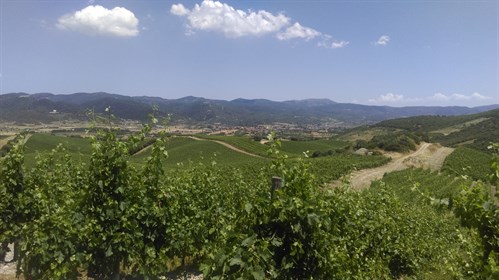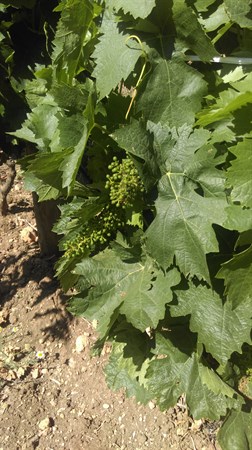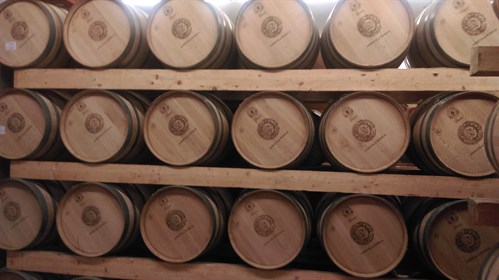
Both Marco and I recently enjoyed our first trip to Southern Sardinia, a wine region which is not particularly the first that comes to mind when you think of Italy, but there is a very long tradition of viticulture here. I remember a few years back I read an article in one of the Italian newspapers that bronze-age winemaking artefacts had been discovered on the island. When ampelographers had DNA’d the remnants of pips that were found in clay amphorae they were identified as Grenache Noir. It is now believed that this is the earliest evidence of this variety in the Mediterranean basin and this variety is today the most widely planted on the island, known locally as Cannonau.
In the southerly region of Sulcis however, it is Carignano that is king. A variety more closely associated with Spain and Languedoc, it is this which dominates the two reds of Agricola Punica: Barrua and Montessu.

Agricola Punica was originally conceived in the early noughties as a joint venture between the co-operative of Santadi and the Incisa della Rocchetta family of Tenuta San Guido. The common factor being the then winemaker and world renowned, Giacomo Tachis. Santadi originally purchased a 25 hectare vineyard in the village of Barrua, away from the coast, around 140 metres with some lovely old Carignano vines planted on schist. With Tachis being the master of Cabernet in Italy (he was the man that created Solaia, Sassicaia, Sammarco et al) the decision was made to blend the Carignano with some Cab, Syrah and Merlot. The wine ‘Barrua’ was first created in 2002 to much acclaim. Far from being an international style of wine, the strength of the Carignano dominates the wine, very much in a Southern Mediterranean style. Walking through the Barrua vineyard on a sunny June morning you can smell the wild herbs and understand the favourable conditions to making rich and powerful, yet balanced reds.
In 2004 the winery decided to start a new vineyard from scratch. Higher up this time, around 170 metres and on ridiculously steep slopes in the village of Montessu. This time planted on clay/limestone soils with some volcanic spots. You can see here that there is more fertility in the soils, and to counter this, they have seeded grass inbetween the rows to help reduce leaf vigour and to slow down the ripening. In this favourable climate, ripening is rarely a problem, it is more about managing the water-stress and the canopy to ensure the physiological ripeness of the grapes and sugar ripeness coincide. Montessu, as a wine, was first released in 2007, and is far from being a second wine of Barrua. It has its own expression of red fruits, dried herbs and spices and sweetness to the fruit.
2015 will likely see the first vintage of their Vermentino and Chardonnay plantings in the Montessu vineyard, planted on the cooler soils and less exposed sites. We are expecting good things.

With regards to the wines, we had a sneaky peak at the soon-to-be-released Montessu 2013, which the winery thinks is their best example yet. It has a saturated dark colour and nose of vibrant black cherries and notes of strawberry, vanilla cream and clove; utterly brilliant. Also on taste was the to-be-released in Autumn 2012 Barrua: showing some restraint and brooding dark notes. Again, a brilliant example of how Sardinia is punching above its weight in making world class wines. Of course, it tasted even better when matched with the local speciality of 24 hour slow-cooked suckling pig.
